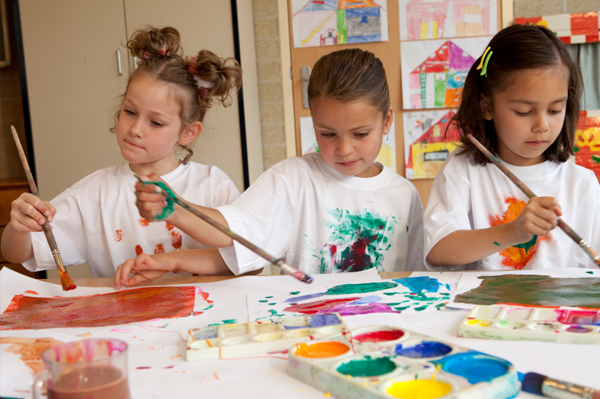
In an age where digital technology dominates much of a child’s time, there is an often-overlooked activity that continues to provide invaluable benefits for their overall development: drawing. Children’s drawing classes not only encourage self-expression and creativity, but they also nurture essential life skills that contribute to their personal growth, academic success, and emotional well-being. By engaging in structured drawing lessons, children are not just learning to sketch—they are building a foundation for cognitive, social, and emotional development that will serve them well throughout their lives. 創意學堂黑店.
Sparking Creativity: The Building Block of Innovation
One of the primary reasons to introduce children to drawing at an early age is its ability to spark and nurture creativity. Creative thinking is not just about artistic expression; it’s about how we solve problems, approach challenges, and innovate in all areas of life. Drawing, as a form of unrestrained self-expression, teaches children that there are multiple ways to approach a task, and that mistakes are part of the learning process.
When children are given the freedom to draw, they are encouraged to explore their imaginations. Whether they are sketching their favorite animals, creating scenes from a story, or designing something entirely from their imagination, drawing exercises their ability to think independently. This creative exploration promotes out-of-the-box thinking, which is crucial not only in the arts but in various academic disciplines, including science, technology, engineering, and mathematics (STEM). In today’s world, where innovation drives success, the creative mindset developed in children’s drawing classes can be the key to unlocking future breakthroughs.
Cognitive Development and Problem-Solving Skills
While drawing may seem like a purely artistic activity, it actually contributes to significant cognitive development in children. As they learn to replicate objects, shapes, and patterns, they engage in complex processes that sharpen their reasoning, memory, and spatial awareness. These skills are foundational for a child’s ability to understand and analyze information later on in life.
For example, when children draw an object, they need to understand its shape, size, proportion, and the way light affects its appearance. These cognitive processes help children hone their attention to detail and become more aware of the world around them. Drawing also encourages children to think critically about how to represent three-dimensional objects on a two-dimensional surface, which fosters spatial intelligence—a key aspect of learning math and science.
Moreover, drawing helps children develop problem-solving skills. When a child faces a challenge in creating an image—such as figuring out how to draw a tree or how to create depth in a picture—they must analyze the issue and find a solution. This process of trial and error is a valuable exercise in critical thinking and adaptability, skills that are beneficial in all areas of education and later in life.
Emotional Expression and Self-Regulation
In addition to its cognitive benefits, drawing offers an important emotional outlet for children. It provides a non-verbal way for children to express their feelings, making it particularly helpful for those who may struggle with articulating their emotions. Art allows children to convey feelings of happiness, sadness, frustration, or excitement, giving them a way to process and understand their emotions.
Children often have difficulty verbalizing complex emotions, but through drawing, they can communicate these feelings in a visual language. A child feeling overwhelmed or anxious might create abstract or chaotic artwork, while a happy child may choose bright colors and smooth lines to reflect their positive mood. Drawing encourages emotional self-regulation by allowing children to externalize and reflect on their emotions in a healthy, productive way.
Moreover, creating art in a supportive environment can have a calming effect. For children who struggle with anxiety or stress, drawing provides a form of meditation. The repetitive motions of drawing or coloring can help children relax, focus their minds, and reduce emotional tension. This emotional regulation is a skill that will benefit children not only in their personal lives but also in their academic and professional futures.
Building Fine Motor Skills
Drawing is also an excellent way for children to develop fine motor skills—the small, precise movements that are necessary for tasks like writing, typing, and even tying shoelaces. The act of holding a pencil, gripping a crayon, or shading with a paintbrush helps children strengthen the muscles in their hands and fingers. These fine motor skills are vital for many everyday activities and form the foundation for tasks they will encounter as they grow older.
In drawing, children practice coordination by making controlled movements with their hands and refining their dexterity. They learn to draw smooth lines, create different textures, and fill in small spaces with accuracy. These fine motor skills also help children improve their handwriting and other academic tasks. The more they practice drawing, the better control they develop over their hand movements, resulting in greater ease and efficiency in everyday tasks.
Social and Collaborative Skills
While drawing is often seen as a solitary activity, many children’s drawing classes incorporate group activities that foster social interaction. Collaboration on group projects or peer feedback during art discussions helps children develop valuable social skills that will serve them well throughout their lives.
In group drawing projects, children learn the importance of teamwork and communication. They practice how to share ideas, respect others’ contributions, and collaborate toward a common goal. These collaborative experiences teach children to be receptive to feedback, as well as how to give constructive criticism. Working with peers also helps children learn to navigate differing opinions and find solutions through compromise, which are essential skills for both academic success and future careers.
Additionally, drawing classes often provide children with opportunities to share their work with others. Presenting their artwork in front of their classmates or family members can help build confidence and public speaking skills. The positive reinforcement children receive when sharing their artwork boosts their self-esteem and encourages them to take pride in their creative efforts.
Boosting Self-Esteem and Confidence
Children’s drawing classes play a significant role in building self-esteem and confidence. When children complete a drawing or piece of artwork, they experience a sense of accomplishment and pride in their work. This reinforces the idea that their creative efforts are valued and appreciated, fostering a positive self-image.
Receiving praise from teachers, parents, and peers also helps children develop confidence in their abilities. As they receive positive feedback and encouragement, children learn to take pride in their progress and feel empowered to continue trying new things. Over time, this confidence extends beyond the art room and can positively affect children’s performance in other academic areas and extracurricular activities.
Moreover, drawing teaches children that mistakes are a natural part of the learning process. As they experiment with different techniques and make adjustments to their artwork, children learn that errors are not failures, but opportunities to improve. This growth mindset—the belief that abilities can be developed through effort and perseverance—helps children build resilience and a willingness to take risks in all aspects of their lives.
Preparing for Future Success
The skills children develop in drawing classes extend far beyond the classroom. As children practice creativity, critical thinking, fine motor skills, and emotional regulation, they are also building a foundation for future success in school and beyond. Many of the qualities that are fostered through drawing—such as innovation, adaptability, and perseverance—are highly valued in today’s rapidly changing world.
The ability to think creatively, solve problems, and collaborate with others is essential in many fields, including business, technology, healthcare, and education. The problem-solving mindset that children develop through drawing can help them excel in STEM-related fields, while their creativity can open doors to careers in the arts, design, and media. Ultimately, the skills children acquire in drawing classes contribute to their overall development as well-rounded individuals who are equipped to navigate an ever-evolving world.
Conclusion: The Lifelong Benefits of Drawing Classes
Children’s drawing classes offer far more than just an introduction to art—they are a valuable tool for fostering creativity, cognitive development, emotional intelligence, fine motor skills, and social abilities. Through drawing, children gain the confidence, problem-solving skills, and resilience needed to succeed in all areas of life. By providing children with the opportunity to engage in drawing, we are not only nurturing their artistic talents but also helping them build a solid foundation for future personal growth and academic achievement. As children develop their creative voices in the art room, they are also developing the skills that will shape them into the innovators and leaders of tomorrow.




